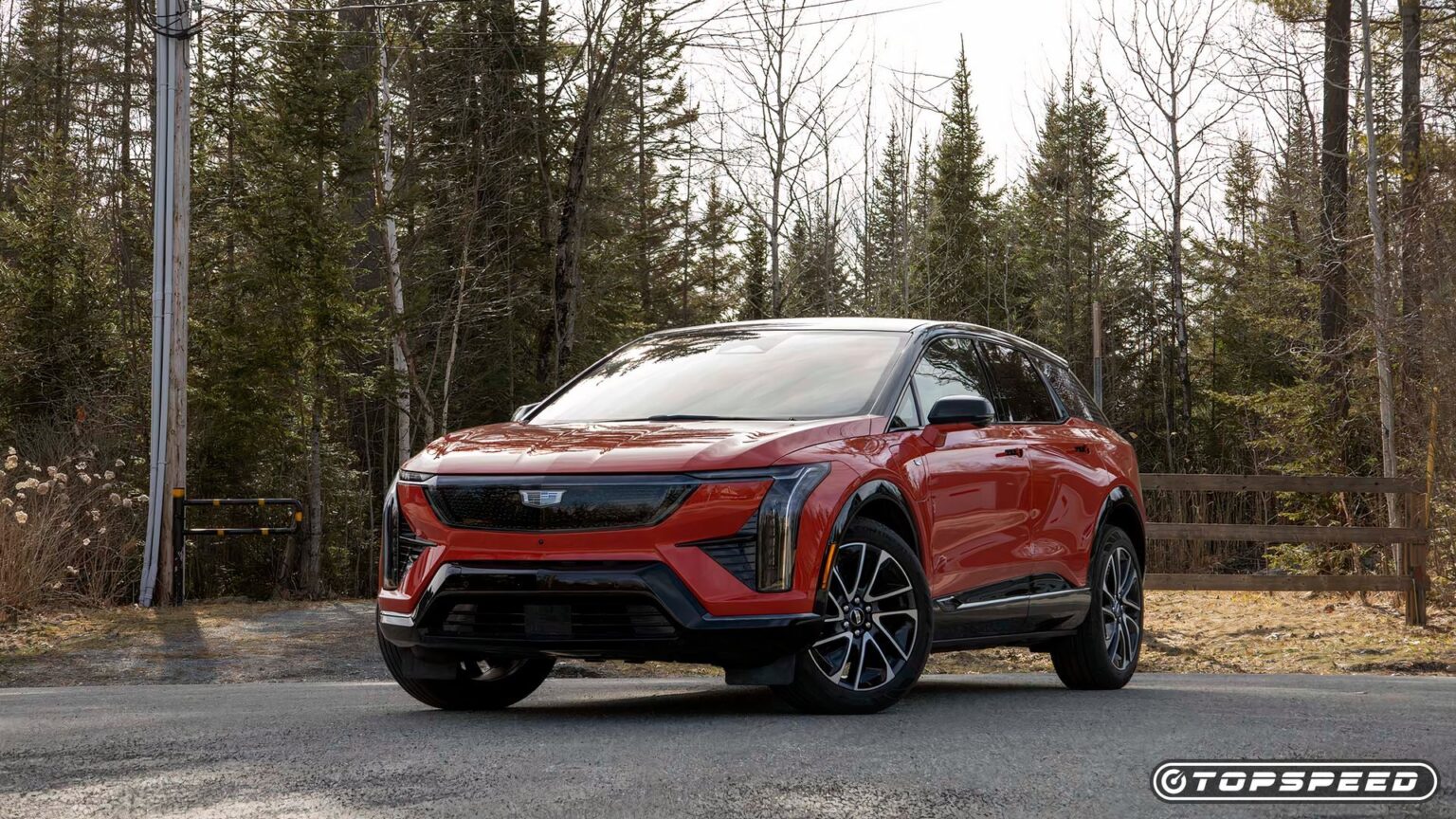Although the electric vehicle (EV) industry isn’t booming like it once did, some automakers are still doing rather well in that space. General Motors (GM) is a perfect case in point. Thanks to a plethora of new electric models of all shapes, sizes, and price points, the General’s U.S. EV sales grew by a whopping 94 percent in Q1 2025. In Canada, GM has even surpassed Tesla as the leading EV automaker.
Some of that success is thanks to Cadillac, which, in recent years, has released not just one, or even two new EVs, but a full lineup of them. Lyriq, Escalade IQ, Celestiq, Optiq, and Vistiq have all slithered their way into the market and, in some cases, like the , replaced existing internal combustion engine (ICE) models.
And it’s all working rather well for Cadillac. The automaker recently announced that it currently has the highest EV conquesting rate of any automaker, meaning it’s obviously stealing sales from other brands. This all means one thing: even if the Trump Administration is trying to thwart EV progress through its One Big Beautiful Bill Act, Cadillac is still marching forward with its EV strategy. Even if it means losing money in the process.
Cadillac Is Gearing Up For A Post-Credit Market
One of the Trump Administration’s EV crackdowns is the elimination of the $7,500 federal tax credit for the purchase of EVs, which translates into a direct loss for brands like Cadillac. While some see this as bad news for automakers, we can use other markets as a reference for what might happen next. Canada is a great example of this. After it halted its federal EV credit program, as well as the province of Quebec suddenly freezing its additional provincial incentives, automakers went straight to work by offering their own types of incentives, either through direct rebates or lower interest rate programs.
Look, whatever happens next, automakers are not going to stop building these EVs, especially not after the massive investments they’ve made in new manufacturing facilities. History has shown us that automakers are willing to use a wide range of different techniques to get their vehicles off of dealer lots, and it’ll be the same story for EVs, whether the government helps them or not. Cadillac, like many others, is therefore not backing down from its agenda. It’s actually gearing up for the post-credit era.
During an interview with the Detroit Free Press, John Roth, Cadillac’s global vice president, said that, for the time being, its vehicles will remain eligible for the $7,500 through either leases or purchases up until the end of the third quarter. After that, he made it clear that adjustments would take place, without specifying what these would be.
Are we always game-theorying what’s going on in the marketplace? Absolutely. As you look at our past, chip shortages, pandemics, you name it, we’ve been through a lot as an organization. And going through that makes you stronger about managing the challenges that are in front of you but also taking advantage of the tailwinds that are blowing behind you.
– John Roth, Vice President of Global Cadillac.
Cadillac Is Betting Hard On EVs To Reshape Its Brand Image
It’s important to underline that Cadillac’s EVs are not here just because the government asked it to build them. They’re not compliance cars, but rather great vehicles that offer competitive range, charging times, and technology. In other words, Cadillac is taking electrification seriously.
Over the past year, I’ve had the opportunity to attend some significant EV launch events at Cadillac, and each time I sat down with key people at the company, I could sense that EVs are not just a move to be hip and cool, but rather a new way of thinking for the brand. Cadillac wants to be seen as an EV automaker, and it’s making strategic moves in the market to come in strong and early in order to disrupt certain segments.
As I write this, one out of four Cadillacs sold is electric, with much of that success coming directly from the entry-level Optiq. Cadillac also made some pretty strong statements by releasing the all-electric Escalade IQ, which sold to the tune of 1,810 examples during Q2. And there’s a reason it chose electric propulsion for its hyper-expensive, Celestiq flagship sedan. That’s because Cadillac wants everyone to know that, moving forward, its new vehicles will only be EVs.
It’ll therefore be interesting to see how Cadillac will power through the removal of the federal tax credit and how the automaker continues pushing its EV roadmap. Only time will tell if this gamble will pay off. But, so far, I’d say Cadillac is off to a very good start in the EV race. Incentives or not.
Read the full article here


